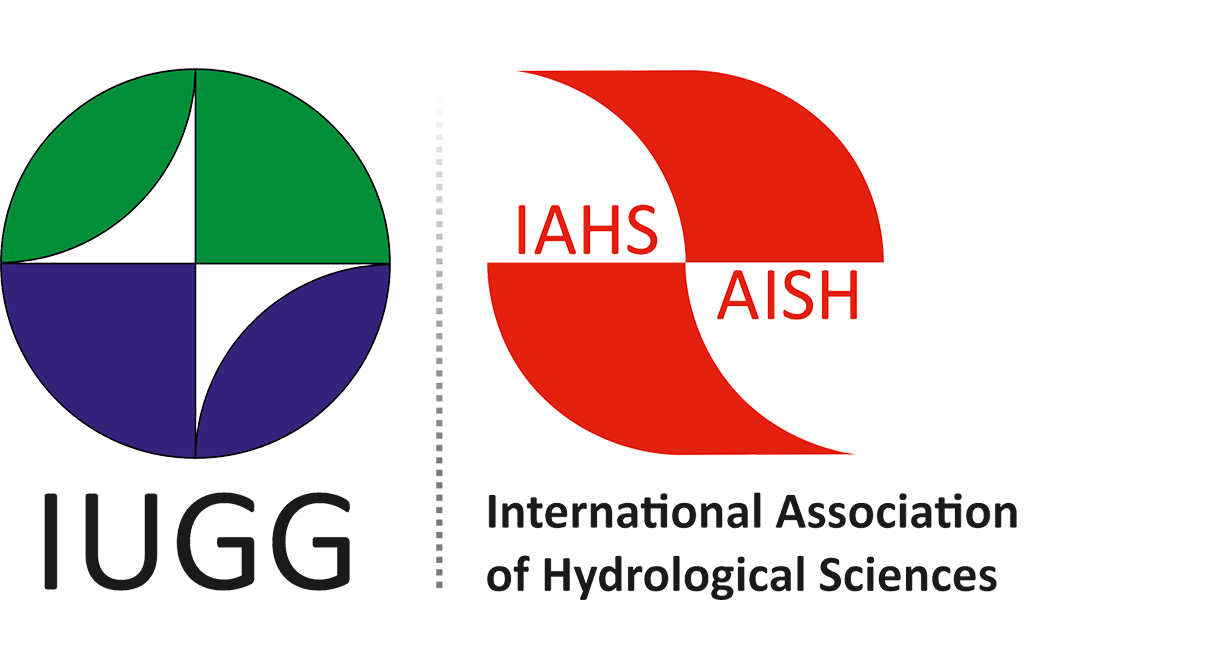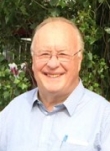2023
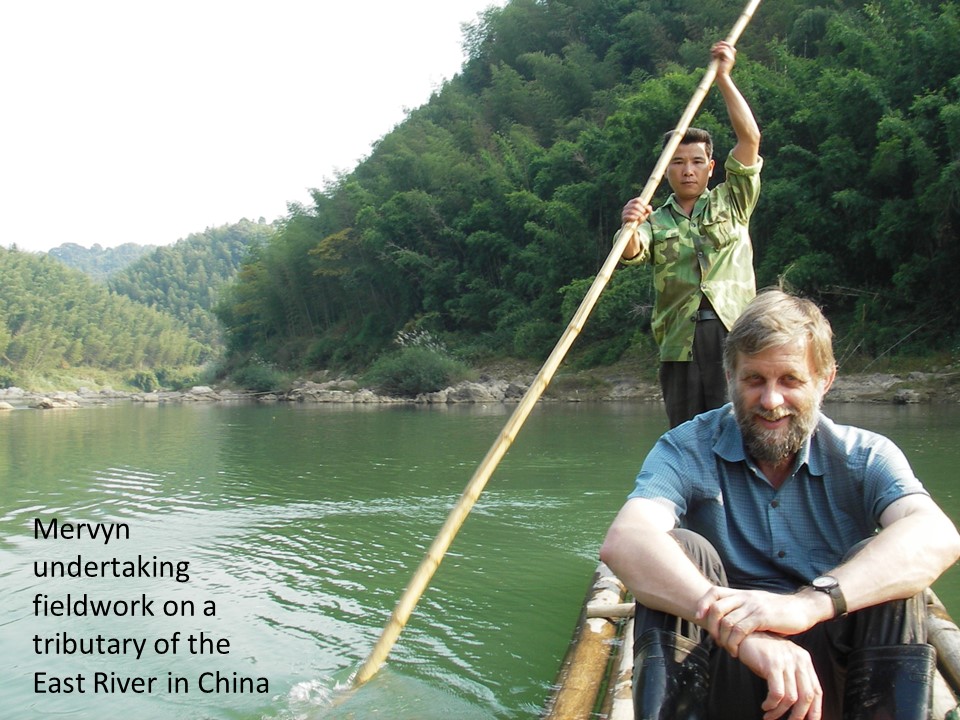
It is with great sadness that we report the unexpected passing of Mervyn Peart on September 15th 2023 at his home in Scotland, two weeks short of his 69th birthday. Mervyn will be known to many longer-term ICCE members, since he was a regular participant in ICCE Symposia and Workshops over a period of nearly 30 years extending from the mid-1980s (Albuquerque, USA) through to 2012 (Banff, Canada and Chengdu, China). As such he must rank as one of the most prolific ICCE members in attending its meetings and contributing papers to the associated ‘Red Books’.
Mervyn graduated in Geography from Manchester University in 1977 and subsequently moved to Exeter to take up a PhD studentship funded by the Natural Environment Research Council. His research focussed on quantifying the relative contribution of different sediment sources to the sediment output from two small catchments near Exeter and he was one of the first researchers to explore the potential for using source fingerprints for this purpose. He presented papers on this topic at the ICCE Symposia held at Albuquerque, New Mexico in 1986 and at Porto Alegre, Brazil in 1988. These could be seen as initiating the longstanding interest of ICCE members in sediment source fingerprinting, which now continues to be successfully promoted by Adrian Collins, Allen Gellis and others. He was also a co-author with Des Walling, Frank Oldfield and Roy Thompson of an early Nature paper published in 1979 on the use of mineral magnetic measurements to discriminate suspended sediment sources. Mervyn was a very enthusiastic and dedicated PhD student, who readily accepted the challenge of manually collecting field data during storm events, which usually seemed to occur at night. He was often seen returning to the Department with numerous cans of muddy water collected overnight, as his colleagues were arriving to start work. Keen to exploit fully the data he collected, Mervyn completed his PhD thesis entitled ‘Sediment sources in two drainage basins in Devon UK’ and this was successfully submitted and examined in 1984. In order to devote time to his thesis when his Studentship ended, Mervyn found employment as a tutor in the Department of Geography for several years, where he proved an excellent teacher who readily developed a strong rapport with his students. This encouraged him to register for a Postgraduate Certificate in Education at Exeter, to increase his future opportunities for employment. Having completed his PGCE in 1985, Mervyn decided that he wanted, if possible, to continue with his research and sought a university lecturer post. They were in short supply at that time, but luck smiled on him. Jim McCulloch, who was Director of the Institute of Hydrology at Wallingford, had been asked by a friend, who was the Head of the Department of Geography at the University of Hong Kong, if he could recommend someone for a lecturer position in his Department. Mervyn was recommended and subsequently interviewed at Wallingford by Jim McCulloch and appointed. In 1986 he left Exeter for Hong Kong where he thrived and stayed until he retired.
Arriving in Hong Kong in 1986 Mervyn was faced with a very different physical and cultural environment. He grew up in rural Norfolk and had lived in Exeter, a relatively small city in Devon, UK, for eight years undertaking research in the surrounding countryside. However, he rose to the challenge and developed a successful research programme which allowed him to indulge his existing interests, but also addressed issues and problems more directly relevant to Hong Kong and its environment. The University’s Kadoorie Agricultural Research Centre (KARC) at Shek Kong, and adjacent land provided the opportunity to instrument several small headwater catchments and Mervyn was able to continue to study suspended sediment fluxes and sources; and also to investigate slope-channel linkages, the role of landslides as sediment sources and the impact of hillfires on sediment loads. He also looked at bedload fluxes and succeeded in establishing a detailed 15-year record of bedload transport for a small catchment. He was still able to spend nights in the field collecting sediment samples, but was also able to involve postgraduate students in the work, including Mark Ruse and Lincoln Fok. The availability of a gamma spectrometer in his Department provided a valuable opportunity for him and Mark Ruse to undertake a study aimed at comparing existing long-term erosion pin measurements for a site near KARC with estimates of longer-term erosion rates provided by caesium-137 measurements and to document the behaviour of this tracer in the Hong Kong environment. Mervyn’s outstanding commitment to field sampling, whatever the time of day or however hard it rained, was noted by other researchers based at KARC and was aptly captured by Graham Reels in his recent book entitled ’Confessions of a Hong Kong Naturalist’, published by Atratothemis Books in 2017. Reminiscing over the time he spent at KARC, his memories of Mervyn were as follows:
‘In addition to these visitors, there was also Mervyn Peart, a bearded lecturer in the University’s Geography Department, who was conducting a long-term study of the KARC stream and was therefore a frequent visitor. He was almost invariably drenched to the bone, owing to the need to tie in his sampling with periods of heavy rainfall. His dedication to his research left me impressed and mystified in equal measure. I would watch him trudging in his wellies through the tropical downpours gritting his teeth, his beard a saturated dripping sponge, carrying a big plastic bucket full of water samples he had just collected from the raging stream and wonder what on earth made him do it. I could only assume he enjoyed it, which made me happy for him. He was a very decent sort.’
As time passed, Mervyn broadened his research horizons both in terms of topic and location. Between 1987 and 2000 he was involved in a project in Tibet which collected precipitation samples from Lhasa and other towns to study their chemistry. The early samples showed that the precipitation was constantly alkaline due to interaction with continental dust, but the study also documented a progressive decline in pH over time which was associated with increased concentrations of nitrate and sulphate attributed to anthropogenic sources. Working with Lincoln Fok, he also undertook a study of the geochemical baseline for fine bed sediment within the 27,600 km2 basin of the East River in China, which provides the main source of the water supply for Hong Kong. Other research areas included flash floods, sedimentation and carbon storage in estuarine mangrove forests, the water chemistry of Hong Kong rivers, sediment quality in the Kam Tin River, Hong Kong, the bioavailability of heavy metals in rice fields, the dust retention capacities of urban vegetation and heavy metal concentrations in plants and soils at roadside locations in urban Guangzhou. In addition to his research role, Mervyn was an important figure in the teaching programme of the Geography Department of University of Hong Kong and he served as Head of Department in 2003-2005 and 2009-2010. He frequently led a popular overseas field study course in the UK for geography major students from 2000 to 2014. His approachable demeanour, passion for geography and field work in particular, and dedication to helping each student understand and appreciate the subject earned him the admiration and respect of many generations of his students.
Mervyn and his wife Mary left Hong Kong on July 8th 2017. In their retirement they chose to settle in a remote area of Northwest Scotland, somewhere very different from Hong Kong. Here they purchased a house in the village of Diabaig (population <30) which is described in Wikipedia as ‘a remote coastal fishing and crofting village that lies at the end of a minor road which runs along the north side of Loch Torridon’. Mervyn was a keen photographer and enjoyed capturing the spectacular scenery of this region with his camera. His photography further demonstrates his understanding of, and passion for, the physical landscape.
There is an in memoriam website for Mervyn with a link to The Glacier Trust (https://www.justgiving.com/campaign/mervynpeart).
Des Walling, Exeter
Lincoln Fok, Hong Kong
2022
In October 2002, during a Symposium of the International Commission on Continental Erosion at Alice Springs, Australia, Professor Des Walling was appointed Honorary President of the Commission in recognition of his unique and outstanding contribution to ICCE. This included serving as the Commission’s Secretary for the period 1975-83 and as its President from 1983 to 1991. As a very active member of ICCE, he did much to advocate the important role which sediment studies have within the wider discipline of hydrology, to encourage co-operation between scientists in very many different countries, and to organise many Symposia and other meetings concerning studies of continental erosion. In 2007, he was awarded the International Hydrology Prize, which is awarded annually by IAHS, with UNESCO and WMO. In the context of the International Association of Hydrological Sciences, he is the editor of 17 ‘Red Book’ Publications focussing on sediment and related topics (https://iahs.info/Publications-News/?category=7). In addition, Professor Walling is the author of more than 500 publications, the majority of which are devoted to reporting studies of erosion and sediment yields and catchment sediment budgets. Although retired from the University of Exeter in 2010, Des remains very active and, for example, continues to write research papers about fluvial sediments and to be an editor of International Journals.
2021

It is with great sadness that we report the sudden and untimely death of Art Horowitz on 26th February 2021, after a relatively short battle with cancer.
Art graduated in 1967 from Queens College, New York, with a BA in Chemistry and Geology. Between 1967-1971 he studied for a Master of Science in Marine Geology at the University of Miami, Florida, USA. Thereafter, he studied for a PhD in Geology (1971-1974) at the University of London, UK and a DIC in Applied Geochemistry (1971-1974) at Imperial College of Science and Technology, London, UK. His PhD furthered his interests in marine geology and involved research on the geochemistry of sediments associated with the mid-Atlantic Ridge. From 1975-1976 he worked as Assistant Professor in the Department of Earth and Environmental Sciences, Queens College, New York. He then worked as an oceanographer in the Environmental Studies Section, New York Outer Continental Shelf Office, where he served as a Contracting Officer's Representative for developing and monitoring the performance of both government and non-government contractors tasked with establishing baseline environmental levels at potential offshore oil and gas leasing sites.
Art’s career changed direction towards things more hydrological when he joined the US Department of the Interior in 1976; first, with the Bureau of Land Management and then with the USGS Water Resources Division in 1978 as a Supervisory Chemist at the Atlanta National Water Quality Lab (ANWQL) in Doraville, Georgia. Between1978-1983 he was Chief of the Automated Wet-chemistry Section for the ANWQL, responsible for analyses of filtered water, whole-water and bed sediment samples as well as the development of novel analytical techniques for use with these sample matrices. When the Atlanta NWQL closed in 1983, he relocated to the Georgia District Office, Atlanta (USGS-WRD) and began his long tenure as Chief Research Chemist of the Sediment Partitioning Research Project. Over the next 33 years Art pioneered many of the laboratory analytical techniques used to partition sediment into its chemical components, with a primary focus on indicators of anthropogenic contamination. He developed and tested many of the field-sampling and processing techniques used daily across the US and internationally by the hydrological community. He undertook important work on evaluating de-watering devices for suspended sediment samples in preparation for chemical analyses and was responsible for the development of protocols for the collection and processing of water samples for subsequent trace element analyses. Other key work included testing the effects of membrane filtration on dissolved trace element concentrations, and an evaluation of short-term spatial and temporal variability in suspended sediment and associated trace element concentrations. From 1997 until his retirement, Art continued as Chief for the Sediment Partitioning Project, within the Georgia Water Science Center, Atlanta, where he was responsible for the sediment and sediment-associated chemistry work for the City of Atlanta Water Quality Monitoring Program and for the separation, trace element analyses, and data interpretation for all suspended and bed sediment samples collected for the national NASQAN program.
As well as work in the laboratory and field testing sampling equipment and sampling protocols and strategies linked to sediment geochemistry, Art was also involved in a number of important field investigations of contaminant transport and fate and water-sediment interactions. These included investigations of mining-related impacts on the Belle Fourche, Cheyenne and Whitewood Creek rivers in South Dakota and high profile geochemical investigations of Lake Coeur d'Alene, the floodplains of the Coeur d'Alene River, and Terrace Reservoir in Idaho. Another nationwide field-based study undertaken by Art in the years before his retirement merits mention as indicative of his dedication to his research. In this, he undertook a nationwide sampling campaign, personally visiting sites as far downstream as practicable on 131 sizeable US rivers located around the coast of the entire country, to collect samples of fine bed sediment to provide ground truth for a national assessment of annual land-sea fluxes of sediment-associated trace and major elements and nutrients that he was undertaking. The sampling campaigns extended over a whole year during 2010-2011. This was followed up in late 2011 by revisiting and resampling 41 of these rivers located between the North Carolina / South Carolina border and the US Canadian border, to investigate the impact of extreme events Hurricane Irene and Tropical Storm Lee, which hit the Atlantic coast of the USA in late August and early September 2011, on the bed sediment chemistry of US Atlantic Coast rivers. Contrary to what might have been expected, these changes were limited. Art also had a longstanding research interest in the changing sediment load of the Mississippi River and demonstrated the importance of the disastrous 1993 flood in influencing such changes. His interests also extended beyond the US; he had a long-term collaboration with French scientists working on the River Seine basin, contributing to their work on sediment geochemistry and sediment-associated contaminants. He also collaborated with Brazilian hydrologists in exploring the problems of obtaining reliable estimates of suspended sediment loads based on infrequent samples and of designing effective sampling strategies.
Art was strongly committed to the need for rigour in the design of hydrological investigations, in their effective implementation and in the interpretation and communication of their results and many will have benefited from this guidance and constructive criticism. He was always available for discussions and enjoyed being a mentor on sediment chemistry and fluvial geomorphology. As a result of his long and focussed career on sediment and contaminant transport in river systems, Art leaves the international science community with a substantial body of more than 100 published outputs. These include the widely cited ‘Primer on Sediment-Trace Element Chemistry’, which has been an important influence on sediment fingerprinting science. This was originally published as USGS Water Supply Paper 2277 in 1985 and a second edition was published by Lewis Publishers in 1991. Several of his key papers on fluvial sediment and sediment associated contaminant fluxes can be found in the journal Hydrological Processes. His most recent co-authored publication appeared in December 2020. Art was an active member of IAHS from 1992 and will be remembered for his fun presence, challenging questions and raucous laugh at many IAHS meetings including the 2005 IAHS General Assembly in Foz do Iguacu, Brazil, for which Art and Des Walling co-edited the notable twin volume Red Book on Sediment Budgets, containing a total of 80 papers. Throughout his IAHS membership, Art was a strong supporter of ICCE stand-alone meetings and during this phase developed friendships with many sediment researchers globally on the basis of his expert knowledge and advice and enthusiasm for high quality sediment and contaminant science. Art was Vice President of ICCE between 2003-2007. In addition to IAHS, Art was an active member of several additional professional societies including the Geological Society of America, the American Geophysical Union, the American Society for Testing and Materials and the International Association of Geochemistry and Cosmochemistry. The ICCE community and sediment and contaminant researchers globally will miss Art greatly and we extend our condolences to his wife Lyn and son William.
2018
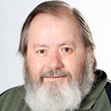
It is with great sadness that we report the sudden and untimely death of Professor Wayne Erskine who passed away in Darwin in late July 2017. Wayne graduated with a Doctor of Philosophy in Fluvial Geomorphology (1987) from the University of New South Wales, Australia. He held academic positions at the University of New South Wales, University of Newcastle – Ourimbah Campus and Charles Darwin University and, also, research scientist positions with New South Wales Department of Water Resources, New South Wales State Forest, Office of the Supervising Scientist (OSS), and the Environmental Institute of the Supervising Scientist (ERISS). He had recently been appointed as the sub-editor of Geographical Research. Wayne was a keen fisherman and spoke often of his obsession for everything related to freshwater science.
Wayne was an exceptionally productive and influential fluvial geomorphologist publishing over 230 peer reviewed international and national journal manuscripts, conference papers and book chapters. He supervised 35 post graduate students. Wayne had been a strong supporter of, and contributor to, ICCE activities since the mid-1980s and will be warmly remembered for his in depth and wide readership of the scientific literature which permitted him to engage in detail with all scientists on their work, his ability to produce high quality papers for the Red Book series, his extremely engaging and word perfect presentations on diverse subjects and increasingly on work bridging pure and applied science, and his capacity to ask incisive questions at conferences backed up by his broad, but in-depth, knowledge and understanding. He had recently been discussing the possibility of hosting a future ICCE meeting with the current committee. Wayne will be greatly missed and is survived by three children - Vanessa, Aaron, Jessica and his Mother Judith.
Professor Adrian Collins, President ICCE
2013
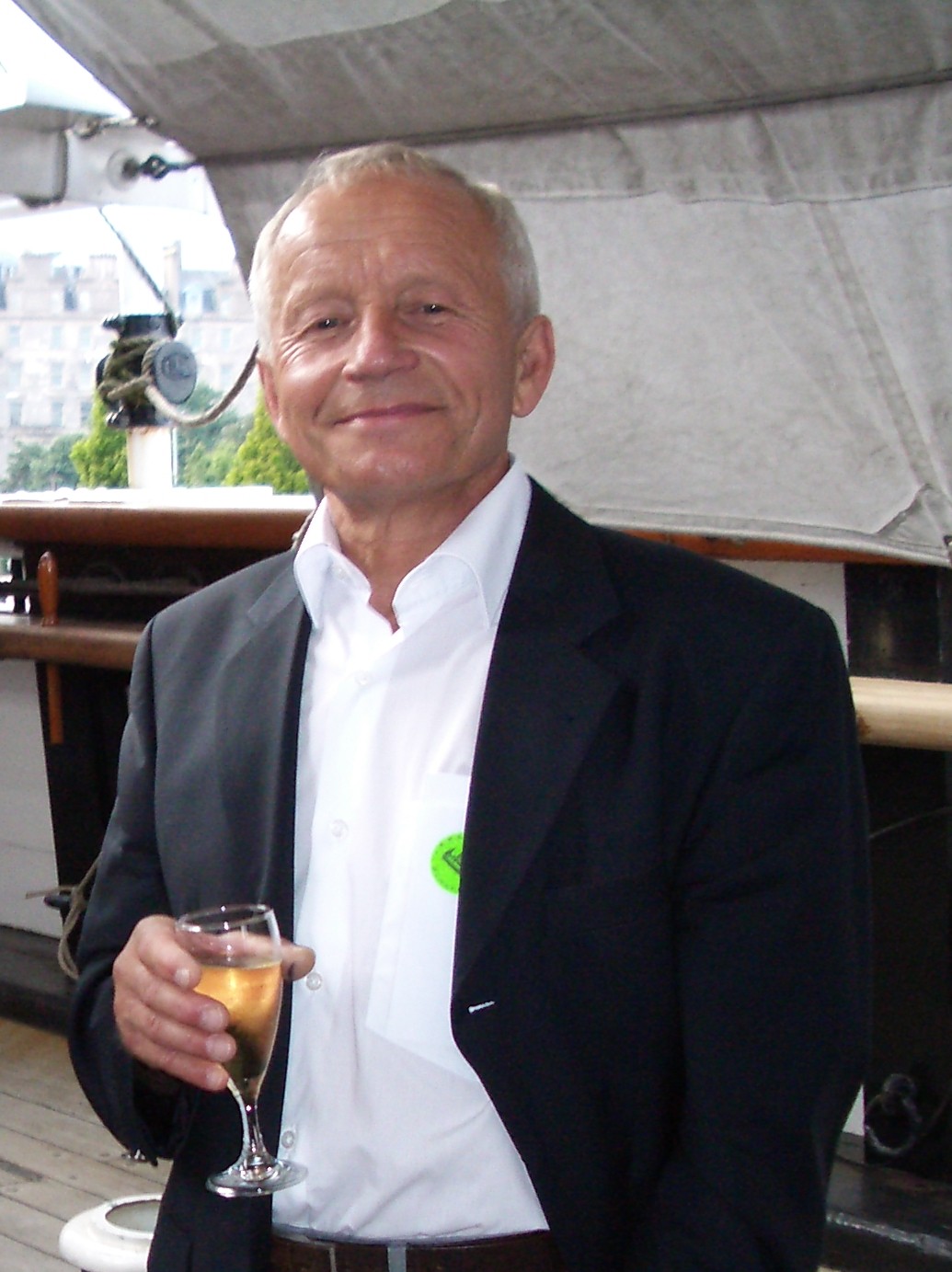
Wojciech at the reception organised for the ICCE Symposium held in Dundee Scotland in 2006 on board the RRS Discovery, made famous by its use by Captain Scott for his voyage to Antartica in 1901-1904 (taken by Art Horowitz).
Although some will already be aware of his passing, I would like to take this opportunity to record the untimely death of our friend and colleague Professor Wojciech Froehlich, from Nowy Sacz, Poland, on 10 October 2013. I had been in contact with him by email only a few weeks previously and his unexpected passing was a great shock. We were planning to meet at an IAEA Workshop in Vienna later this year and to have dinner and a glass of wine together at our favourite restaurant in Backerstrasse. He was shortly due to retire and was looking forward to spending time processing the vast mass of data that he had collected from the Homerka catchment over the past 30 years and writing papers, things which he had found very little time for in his very busy life in recent years. Wojciech was a longstanding and very active member of the International Commission on Continental Erosion and served as its President from 2002 to 2005. He will be greatly missed.
Wojciech was born in Nowy Sacz, in southern Poland, in 1943 and he inherited a strong and lifelong interest in nature and the environment from his father. He studied Physical Geography as a student at the University of Torun and graduated with a Masters degree in 1965. Lack of opportunities for further study saw him start his career as a school teacher, but he continued to look for possibilities for undertaking research for a PhD. In 1971, he was fortunate to obtain an assistant position in the Department of Geomorphology and Hydrology of the Institute of Geography of the Polish Academy of Sciences in Krakow, where he worked under Leszek Starkel and Kasimierz Klimek. He commenced a study of the Kamienicy Nawojowskiej River, which flowed through his home town of Nowy Sacz. His work was highly innovative for the early 1970s and focused on fluvial processes within both the catchment and the river channel. He was awarded his PhD in 1974 and his Habilitation in 1982 and was promoted to Professor in 1995. The latter was conferred on him by the Polish President, Lech Walesa. In 2001 he was elected a Corresponding Member of the Polish Academy of Arts and Sciences, based in Krakow.
After his PhD investigations on the Kamienicy Nawojowskiej River, Wojciech turned his attention to instrumenting the nearby Homerka catchment (19.6 km2), which provided the focus of his work throughout the remainder of his career. He established a small research station in the catchment from which he worked. This was progressively upgraded and expanded and by the time of his passing was a very impressive facility, notable for its well-tended flower garden. Essentially single handed, he established an impressive network of measuring stations in the catchment, which, by the time of his death, had record lengths of approx. 30 years. This was complemented by experimental areas such as the "experimental slope". Difficulties of obtaining equipment in the early days were readily overcome - he made much of the equipment himself! Studies of sediment transport were a particular focus of Wojciech's work in the Homerka catchment and he developed novel methods of measuring bed load transport and tracing soil redistribution and sediment sources.
He was amongst the first to recognise the potential of fallout radionuclides, and particularly caesium-137, for documenting rates of soil erosion and sediment redistribution and as sediment tracers and this resulted in his long-term involvement in three successive IAEA Collaborative Research Programmes aimed at advancing work in this field, which extended over nearly 20 years. He can lay claim to being one of the first to demonstrate the important role of unmetalled roads as sediment sources in upland catchments, to employ fallout radionuclides to trace suspended sediment sources and their dynamics during flood events and to recognise the potential for using Chernobyl fallout to document recent floodplain sedimentation rates. In addition to his work in the Homerka catchment, Wojciech also had a long standing interest and involvement in work in the Himalaya region, of India, where he studied fluvial processes in areas of high rainfall around Cherrapunji and assembled some very impressive records of floodplain sedimentation along the Teesta River, using caesium-137 and lead-210 as chronometers.
Wojciech's work in the Homerka catchment and in India is well known and highly respected internationally. It led to more than 60 papers in international journals and conference proceedings and more than 150 papers in national journals and related publications and was reported in papers presented at some 65 international symposia and workshops. When I first met him the late 1970s he could speak no English, but he rapidly engaged with the international community and became a leading figure. As indicated above, he served as President of ICCE from 2002 to 2005 and he was also a Council member of the World Association of Sedimentation and Erosion Research (WASER) from 2004 to 2010 and was involved in a number of IGU and IGBP activities. His high international standing was probably under-recognised in his home country, which rarely, if ever, provided him with financial support for overseas travel. However, his contribution was highly valued by the international community, which provided the necessary support for his participation in their activities.
Wojciech will be remembered for his dedication and for his wide ranging scientific and technical ability. He operated his research catchmernt essentially single handed, moving around on skis in the winter. He mixed concrete to construct his gauging stations, fabricated electronic equipment, operated his own well-equipped laboratory with its impressive gamma spectrometry suite and was a constant source of new ideas. He was particularly adept at exploiting the opportunities offered by modern IT and his impressive PowerPoint displays, with inserted videos of rivers in flood etc, frequently secured accolades as the best presentation at international meetings. A story is often told relating how, during the post-symposium tour associated with the ICCE Symposium in Canberra, Australia in 1994, the air conditioning unit in the coach failed in very hot weather, to the great discomfort of the participants. The supply of beer and water soon ran out. However, Wojciech came to their rescue. He located and remedied the fault, restarted the air conditioner and saved the day. Several people have told me that they will always remember Wojciech's smile. This is well captured by the accompanying photograph kindly provided by Art Horowitz.
Wojciech is survived by his two daughters, Katarzyna and Dominika and by several grandchildren.
Des Walling, Former President ICCE and Chairman IAHS Ltd.
